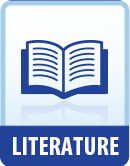|
This section contains 277 words (approx. 1 page at 400 words per page) |

|
Romanticism Summary & Study Guide Description
Romanticism Summary & Study Guide includes comprehensive information and analysis to help you understand the book. This study guide contains the following sections:
This detailed literature summary also contains Bibliography on Romanticism by .
Romanticism as a literary movement lasted from about 1789 to 1832 and marked a time when rigid ideas about the structure and purpose of society and the universe were breaking down. During this period, emphasis shifted to the importance of the individual's experience in the world and his or her interpretation of that experience, rather than interpretations handed down by the church or tradition.
Romantic literature is characterized by several features. It emphasized the dream, or inner, world of the individual. The use of visionary, fantastic, or drug-induced imagery was prevalent. There was a growing suspicion of the established church, and a turn toward pantheism (the belief that God is a part of the universe rather than separate from it). Romantic literature emphasized the individual self and the value of the individual's experience. The concept of "the sublime" (a thrilling emotional experience that combines awe, magnificence, and horror) was introduced. Feeling and emotion were viewed as superior to logic and analysis.
For the romantics, poetry was believed to be the highest form of literature, and novels were regarded as a lower form of writing, often as "trash," even by those most addicted to reading them. Most novels of the time were written by women and were therefore widely regarded as a threat to serious, intellectual culture. Despite this, some of the most famous British novelists wrote during this period, including Jane Austen, Mary Wollstonecraft Shelley, and Sir Walter Scott. In addition, this period saw the flowering of some of the greatest poets in the English language, including William Blake, Samuel Taylor Coleridge, Percy Bysshe Shelley, and William Wordsworth, many of whose works are still widely read today.
Read more from the Study Guide
|
This section contains 277 words (approx. 1 page at 400 words per page) |

|



